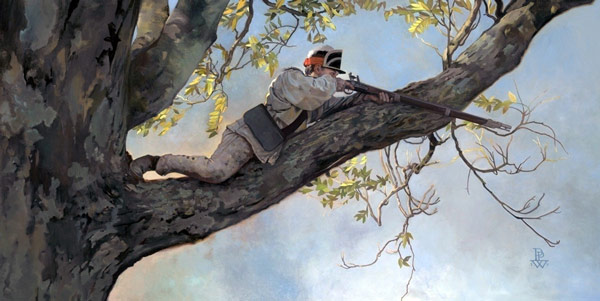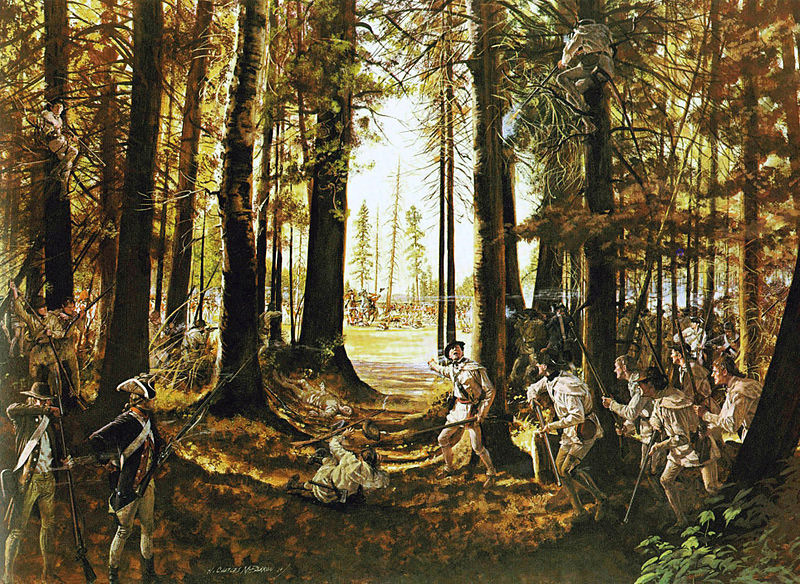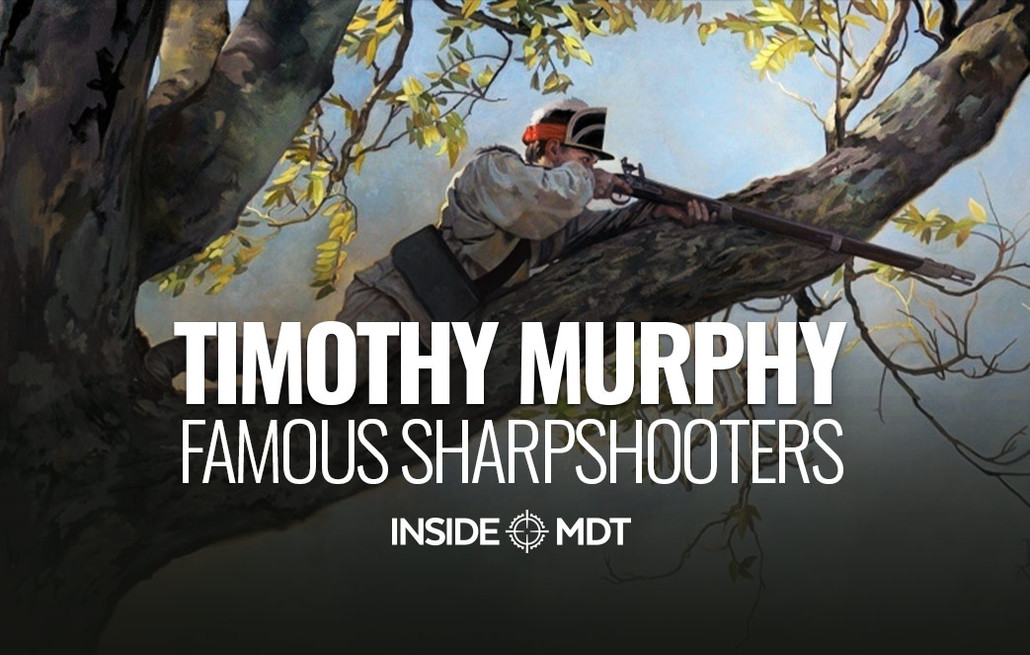Posted by Cory Ross on 2023 Oct 5th
Famous Sharpshooters: Timothy Murphy - Inside MDT
Timothy Murphy, General Daniel Morgan, and Hiram C Berdan. These men all have one thing in common: they were sharpshooters. While today we focus on Carlos Hathcock, Chris Kyle, and Canadian Sniper nicknamed Wali as some of the most prominent and famous snipers, they wouldn't be where they are without those who came before. In an era before precision rifles, magnified optics, and self-contained metallic cartridges, men of the American Revolution and Civil War did the unthinkable. Their shots changed outcomes and fostered fear in those they faced. This is their story.
TIMOTHY MURPHY: THE DEADLIEST MARKSMEN OF THE REVOLUTION
The structure of the Continental Army as it formed in the aftermath of the Boston Siege was lacking in comparison to its European contemporaries. In fact, it wouldn't be for several more years until the army measured up and resembled something professional (this was in large part due to the instilment of discipline and drill by Baron de Steuben of Prussia at Valley Forge). However, the armies—both regular and militia—were filled with heroes. One that stands out is a little-known frontiersman named Timothy Murphy. Murphy was born to Irish Immigrants in 1751 and spent most of his younger years in modern-day Sunbury, Pennsylvania. Unfortunately, not much is known about his youth other than he apprenticed with the Van Campen family and relocated to the Wyoming Valley Frontier (Pennsylvania), where he likely mastered his frontier skills.
As news spread of the events occurring in Boston, many felt the patriotic call to duty. Timothy and his brother, John, on June 29, 1775, enlisted in Captain John Lowdon's Company of Northumberland County Riflemen. While the Colonists lacked "modern" military doctrine, they excelled in one thing—riflery. The rifle units hailing from the backwoods of Pennsylvania, Maryland, and Virginia possessed a reputation for marksmanship. Historian Paul Lockhart wrote in Firepower: How Weapons Shaped Warfare, "[Rifleman] were no substitute for line infantry armed with muskets, but they were a valuable ancillary nonetheless, capable of picking off individual soldiers at astonishing ranges." Murphy was a veteran of several early-war battles, including the Siege of Boston, the Battle of Long Island, and skirmishes in Westchester. Here, Murphy proved his prominence with a rifle. Because of this, in July of 1777, Murphy passed Daniel Morgan's marksmanship test, which was no small feat. In it, a rifleman must be able to hit a 7-inch target at 250 yards. Remember, this is before magnified optics and carefully loaded ammunition. These rifles were loaded manually—powder, wad, projectile, and so on—and utilized rudimentary sights. To no surprise, Murphy qualified and joined Morgan's legendary rifle corps.

"Marksman" by Pamela Patrick White, White Historic Art.
Under orders, Murphy joined a hand-picked unit of 500 men to accompany Morgan to upstate New York to fend off the invading British under General John Burgoyne. During this time, it was at the Battle of Saratoga that Murphy earned his place in the legendarium of the Revolutionary War. As the battle raged, the British—in disarray—were rallying around General Simon Fraser. As Fraser began reforming the line, Continental General Benedict Arnold (yes, that Benedict Arnold, albeit before he turned coat) shouted to Morgan that the "man on the gray horse is a host in himself and must be disposed of." Morgan, realizing the weight of the situation, ordered his best marksman to take a shot. Timothy Murphy then turned and climbed a nearby tree. Once atop, he leveled his rifle, controlled his breathing, and took aim at the redcoat general. As the cloud of smoke dissipated from Murphy's rifle, General Fraser fell nearly 300 yards away. Seconds later, General Burgoyne's chief Aide-de-Camp rode to the scene to deliver an urgent message. Murphy's second shot met him at his arrival. Both men died.

This snapshot of the Battle of Saratoga is shrouded in mystery. Substantiated accounts of what occurred are nonexistent. Historians have argued about the type of weapon Murphy used, many claiming it was the famed Goulcher double-barreled rifle, but evidence shows that much of John Goulcher's work occurred after the Revolutionary War. Moreover, historians have argued about the truth behind the event. Some argue Murphy made several attempts, slowly working out the elevation hold required for the long-distance shot. What Arnold said to Morgan is also questionable, as is the account that Murphy took a second shot at Burgoyne's Aide-de-Camp. But that's not the point of this article. Historians have spent countless hours researching the event and still cannot come to a unanimous conclusion.
The importance is that Murphy helped form the idea that a trained marksman can single-handedly alter the trajectory of a battle. The fact is that General Fraser died at Saratoga by a shot from several hundred yards. Murphy is who is attributed to the act and thus has lived on. The importance of Murphy, Daniel Morgan, and a unit of trained riflemen was the havoc they could unleash on a battlefield. This idea has transcended time and is represented by Berdan's Sharpshooters of the Civil War to the modern-day sniper; each has acted similarly to Murphy to change the course of battle.
Murphy continued to serve in Morgan's Rifleman until his enlistment expired in 1779. He then settled around the Schoharie Valley. Murphy's involvement in the conflict continued either through local militia or reenlistment until the war's end. Interestingly, Murphy never learned to read or write but possessed an entrepreneurial spirit. Before he died in 1818, Murphy owned several farms and a grist mill and became involved in local politics. Murphy might have been a simple frontiersman, but we remember him because of his legendary shot and the importance of a sharpshooter on the battlefield.
MDT SHARPSHOOTERS
- From Family Hunts to PRS Podium - Inside MDT: Jake Millard
- From Bar Chat to Top Shooter - Inside MDT: Chad Heckler
- Teenager Becomes National Pro Shooter - Inside MDT: Allison Zane
- God, Guns, And Family - Inside MDT: Andy Slade
- Mastering The Craft Of PRS - Inside MDT: Francis Colon
- The North American Super Slammer - Inside MDT: Jon Pynch
- Teaching & Growing PRS - Inside MDT: Matt Stiner
- TEAM MDT's Jon Pynch & Scott Satterlee - Answering viewer questions live at MDT.
ABOUT THE AUTHOR
I have worked in the firearms industry for 11 years and counting. What started as a part-time job during undergrad has become a career. In that time, I have been lucky to work with some incredible people and companies. I also completed a Master of Arts in History from Cleveland State University. When I am not shooting, reloading, or working on my firearms, I am reading, writing, and tinkering with Legos.


 CAD
CAD
 Euro
Euro
